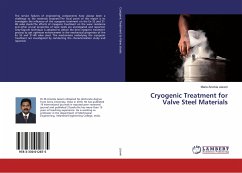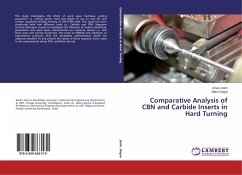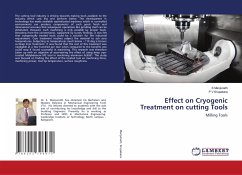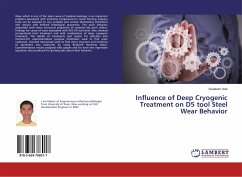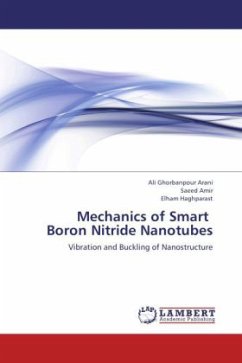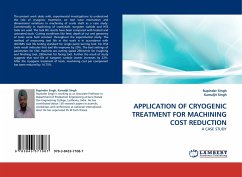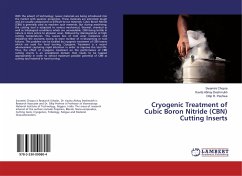
Cryogenic Treatment of Cubic Boron Nitride (CBN) Cutting Inserts
Versandkostenfrei!
Versandfertig in 6-10 Tagen
33,99 €
inkl. MwSt.

PAYBACK Punkte
17 °P sammeln!
With the advent of technology; newer materials are being introduced into the market with superior properties. These materials are extremely tough and are usually categorized as difficult-to-cut materials. Cubic Boron Nitride (CBN) is generally used to machine such materials. But during machining; the cutting tool is subjected to various mechanical, thermal, chemical as well as tribological conditions which are unavoidable. CBN being brittle in nature is more prone to abrasion wear, followed by disintegration at high cutting temperatures. This causes loss of tool wear resistance and imbalance t...
With the advent of technology; newer materials are being introduced into the market with superior properties. These materials are extremely tough and are usually categorized as difficult-to-cut materials. Cubic Boron Nitride (CBN) is generally used to machine such materials. But during machining; the cutting tool is subjected to various mechanical, thermal, chemical as well as tribological conditions which are unavoidable. CBN being brittle in nature is more prone to abrasion wear, followed by disintegration at high cutting temperatures. This causes loss of tool wear resistance and imbalance the economy owing to more number of re-sharpening or tool failures. This problem can be tackled by cryogenic treatment of CBN inserts which are used for hard turning. Cryogenic Treatment is a recent advancement capturing rapid attention in order to improve the tool life. Thus, the effect of cryogenic treatment on the performance of CBN cutting inserts is an unexplored domain that needs to be tapped appropriately in order to extract maximum possible potential of CBN as cutting tool material in hard turning.





